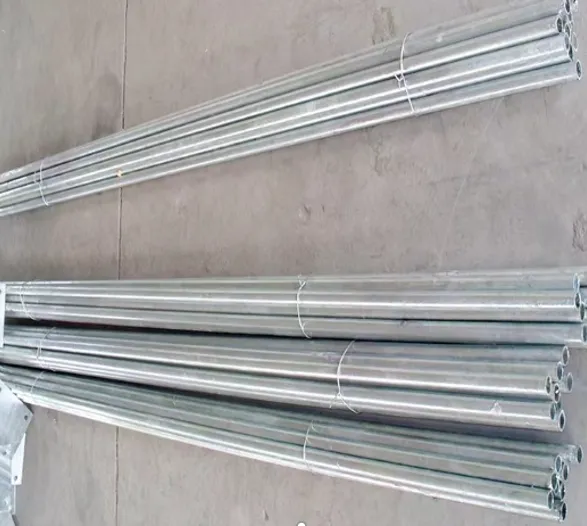loading...
- No. 9, Xingyuan South Street, Dongwaihuan Road, Zaoqiang County, Hengshui, Hebei, China
- admin@zjcomposites.com
- +86 15097380338
- Welcome to visit our website!
frp bars in concrete
The Use of FRP Bars in Concrete Enhancing Structural Integrity
In the realm of civil engineering and construction, the pursuit of stronger, lighter, and more durable materials has led to notable innovations. One of the most promising advancements in recent years is the utilization of Fiber Reinforced Polymer (FRP) bars in concrete structures. This article explores the fundamental properties of FRP bars, their advantages over traditional reinforcement, applications in construction, and considerations for designers and engineers.
Understanding FRP Bars
Fiber Reinforced Polymer (FRP) bars are composite materials made from a polymer matrix reinforced with fibers, typically glass, carbon, or aramid. These bars are lightweight, non-corrosive, and possess high tensile strength. Unlike traditional steel reinforcement bars (rebar), which are prone to rust and corrosion in aggressive environments, FRP bars are designed to withstand extreme conditions, making them ideal for use in a variety of construction projects.
Advantages of FRP Bars Over Traditional Rebar
1. Corrosion Resistance One of the most significant benefits of FRP bars is their resistance to corrosion. In environments exposed to moisture, chemicals, or aggressive substances, such as coastal regions or areas with deicing salts, conventional steel can deteriorate over time. In contrast, FRP bars maintain their structural integrity and functionality, leading to longer service life and reduced maintenance costs.
2. High Strength-to-Weight Ratio The lightweight nature of FRP bars allows for easier handling and installation. Engineers can design structures with less overall dead weight, which is particularly advantageous in seismic-prone areas where reduced loads can diminish the risk of structural failure.
3. Thermal Conductivity Unlike steel, which conducts heat, FRP bars have low thermal conductivity. This property is beneficial in applications where temperature fluctuations could impact structural performance, as FRP bars do not transfer heat and help maintain the stability of the surrounding materials.
4. Non-Magnetic Properties FRP bars do not interfere with electromagnetic fields, making them suitable for applications in sensitive environments such as hospitals or laboratories where magnetic interference is a concern.
Applications in Construction
frp bars in concrete

The versatility of FRP bars allows for a wide range of applications in construction. They are increasingly used in
- Bridges FRP bars enhance the longevity of bridge structures by reducing susceptibility to corrosion, which is critical in sustaining safety and functionality over decades. - Parking Structures High-resistance to environmental factors makes FRP bars ideal for multi-level parking garages, where deicing materials can accelerate corrosion in steel reinforcements.
- Coastal Structures Structures exposed to seawater or saline environments, such as piers or seawalls, benefit greatly from the non-corrosive properties of FRP bars, ensuring extended lifespan and reliability.
- Industrial Structures Factories and warehouses that involve chemicals and moisture can use FRP bars to safeguard against corrosion and extend the lifecycle of the facility’s infrastructure.
Considerations for Designers and Engineers
While the advantages of FRP bars are compelling, designers and engineers must also be aware of the unique challenges associated with their use. Proper design protocols and quality control measures must be established, as the behavior of FRP under various load conditions can differ from that of traditional steel. It is essential to conduct thorough research and testing to ensure that the selected FRP materials fit the specific requirements of a project, including load capacity and environmental conditions.
Additionally, the initial cost of FRP bars may be higher than that of conventional rebar. However, when considering the long-term benefits such as reduced maintenance and extended service life, there is a compelling case for their use in many applications.
Conclusion
The integration of Fiber Reinforced Polymer bars into concrete structures represents a significant advancement in construction technology. Their durability, light weight, and resistance to corrosion position them as a preferred alternative to traditional reinforcing materials in various applications. As the construction industry continues to evolve, incorporating innovative materials like FRP bars will be crucial in meeting modern engineering challenges and ensuring safer, more resilient infrastructure for the future.
-
GRP Structures: The Future of Lightweight, High-Performance EngineeringNewsJun.20,2025
-
FRP Water Tank: High-Performance Storage for Corrosive and Clean Water SystemsNewsJun.20,2025
-
FRP Square Tube: The New Industry Standard for Chemical and Structural ApplicationsNewsJun.20,2025
-
FRP Pultruded Profiles: The Ultimate Choice for Lightweight Structural StrengthNewsJun.20,2025
-
FRP Handrails: The Safer, Smarter, and Stronger Choice for Modern InfrastructureNewsJun.20,2025
-
FRP Grating: The Smart Solution for Durable, Lightweight Industrial FlooringNewsJun.20,2025
-
Why Choose a Galvanized Water Tank for Your Storage NeedsNewsMay.21,2025
